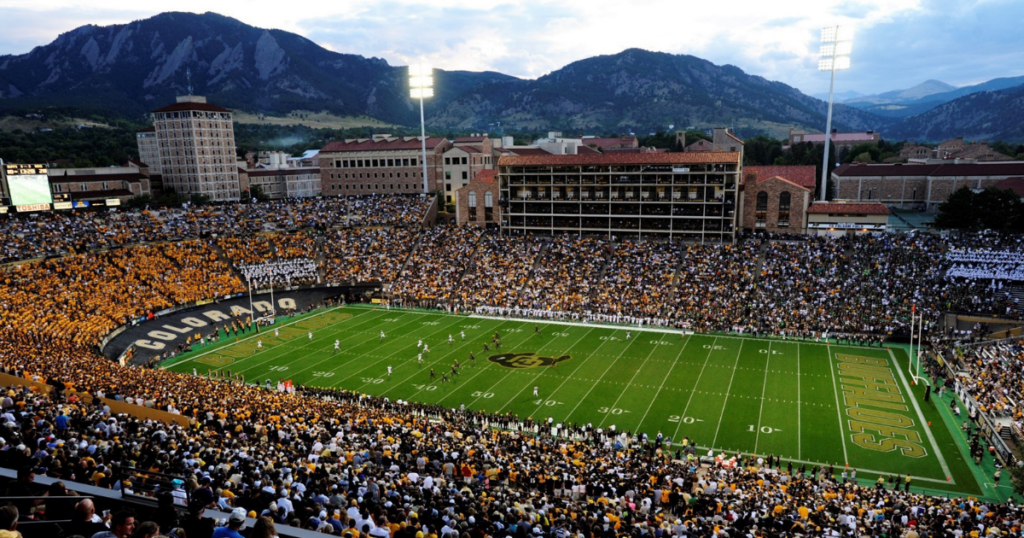What’s in a (stadium) name? The back stories of how the used-to-be Carrier Dome and others got their names

The Carrier Dome, which opened on the Syracuse campus in 1980, was different in a lot of ways. For one, it was the only FBS stadium that also served as the home venue for the school’s basketball team. For another, the dome was named for an air conditioning company but didn’t have A/C (it was added in 2020).
Alas, the Carrier Dome is no more. (Well, sort of.)
The school recently announced a naming rights deal with the Syracuse-based JMA Wireless, and the dome henceforth will be named the JMA Wireless Dome.
The school’s deal with Carrier also was unique. When the facility opened in 1980, there were few college venues that were named for a corporate partner; that, of course, is somewhat normal these days. The deal, unbelievably, also was for perpetuity, which meant that for $5 million – a lot in 1980 but basically nothing today – Carrier bought the name forever for what would become a famous dome. Syracuse announced last month that Carrier had agreed to give up its naming rights.
The name change got us thinking about some football stadiums that aren’t named after a corporate sponsor – and aren’t Memorial Stadium or University Stadium or Ohio Stadium or Alumni Stadium. There are some interesting back stories for some of them; here are 10.
Autzen Stadium, Oregon
Built: 1967
The skinny: Before Autzen was built, the Ducks played at Hayward Stadium; the football team shared it with the track team. But at the time, Hayward was small and relatively decrepit, and many “big” games were played in Portland starting in the 1950s. The cost for the new stadium was just $2.3 million and $250,000 was donated by the Autzen Foundation. That foundation honored philanthropist Thomas J. Autzen and was run by his son. Interestingly, Thomas Autzen was an Oregon State alum.
Beaver Stadium, Penn State
Built: 1959
The skinny: There has been a Beaver Stadium on campus since 1893. This is the third iteration; this version has been expanded six times. It is named for James A. Beaver, the governor of Pennsylvania from 1887-91 and also the head of the school’s board of trustees.
Bounce House, UCF
Built: 2007
The skinny: It opened as Bright House Networks Stadium, then was renamed Spectrum Stadium in 2017. Both are cable providers, and Spectrum’s parent company, Charter Communications, bought out Bright House. The Spectrum deal ran out after the 2019 season and a 15-year, $35 million naming-rights deal with RoofClaim.com was dropped for political reasons. The stadium’s nickname, which came about because the facility actually sways a bit when fans get especially raucous, has been used as the name since 2020.
Camp Randall Stadium, Wisconsin
Built: 1917
The skinny: It’s the oldest stadium in the Big Ten. It is named after – and built on the site of – Camp Randall, which was a Union Army training center during the Civil War. That camp was named after Wisconsin Gov. Alexander Randall. The original camp was built on the site of the Wisconsin State Fairgrounds.
Top 10
- 1New
YouTube TV, ESPN dispute
Google blasts ABC
- 2
College Football Playoff
Teams that remain in the hunt
- 3Hot
BCS Formula
Predicts first CFP Top 25
- 4
CFP Top 25 predictions
Projecting first rankings
- 5Trending
Auburn Hot Board
Top candidates to replace Freeze
Get the Daily On3 Newsletter in your inbox every morning
By clicking "Subscribe to Newsletter", I agree to On3's Privacy Notice, Terms, and use of my personal information described therein.
Folsom Field, Colorado
Built: 1924
The skinny: It was opened as Colorado Stadium and didn’t become known as Folsom Field until 1944; it was renamed to honor former coach Fred Folsom, who coached the Buffs for 15 non-consecutive seasons before retiring following the 1915 campaign. He retired to focus on his career as a law professor at Colorado. The stadium was renamed shortly after his death in 1944.

Gerald J. Ford Stadium, SMU
Built: 2000
The skinny: It’s not named for the former president; that’s Gerald R. Ford and he starred in football at Michigan. This Ford is a billionaire banker and SMU alum who donated $20 million to build the facility. The stadium is on the site of the former Ownby Stadium, which was built in 1926 and demolished in 1998. SMU played at Ownby until 1948, when it moved to the Cotton Bowl and later to Texas Stadium. After the NCAA-mandated death penalty, the Mustangs moved back to basically a rebuilt Ownby in 1989 before school officials decided they needed a new facility.
Glass Bowl, Toledo
Built: 1937
The skinny: OK, this is our winner for the coolest stadium name. It originally was known as University Stadium, then renovated and renamed in 1946. The new name was an homage to the city’s long history of glass production, including for cars produced in nearby Detroit.
Michie Stadium, Army
Built: 1924
The skinny: With its position overlooking the Hudson River, this is one of the most picturesque settings in college sports. The stadium’s namesake is Dennis Michie, who was credited with helping to start the academy’s football team while a cadet in 1890. He died at age 28 in Cuba during the Spanish-American War in 1898.
Sanford Stadium, Georgia
Built: 1929
The skinny: Yes, the hedges have been there since the stadium opened, though they were removed for soccer games during the 1996 Olympics before being replanted. The stadium is named for Steadman Sanford, who was dean of the university when the facility was opened. He later became school president and finally chancellor of the state university system. Sanford, who founded Georgia’s journalism department in 1921 (the man obviously was extremely intelligent), served as the faculty chairman of athletics for 25 years. He played a key role in the development of the Southern Conference, which later morphed into the SEC.
Wallace Wade Stadium, Duke
Built: 1929
The skinny: It was called simply Duke Stadium from its opening until 1967, when it was renamed for former Blue Devils coach Wallace Wade (1931-41, 1946-50); Wade also coached at Alabama and guided the Tide to three national titles. Indeed, he left Alabama for Duke – as mystifying then as it would be now. (Wade has a statue outside of Alabama’s Bryant-Denny Stadium.) Wade took Duke to two Rose Bowls, including the one after the 1941 season that was played at Duke Stadium in the aftermath of Pearl Harbor. When Wade was away during World War II, he was replaced by Eddie Cameron, who gave up coaching basketball. He is the namesake of Duke’s Cameron Indoor Stadium.